December 16 2014. Naples Florida. This and the next few posts are about birds enjoyed on a pre-Christmas week escape to summery Florida. It’s not just poolside lolling around for us though, we’re with friends whose idea of a good day is one spent birding, scrutinising leafless trees for orchids, wading hip-deep through dark swamps in alligator country, or anything else necessary to explore the natural riches of the state.
Today, as an introduction to the state’s wonders, we walked to a long white beach where shorebirds and beach-combers share the water’s edge on equal terms. In much the same way you enter a supermarket and are beset by lettuce here, oranges straight ahead and breads and muffins to the left, so it was here with birds: Black-bellied Plovers, Ruddy Turnstones and Sanderlings in front, Willets right behind them and Snowy Egrets just a short distance away.
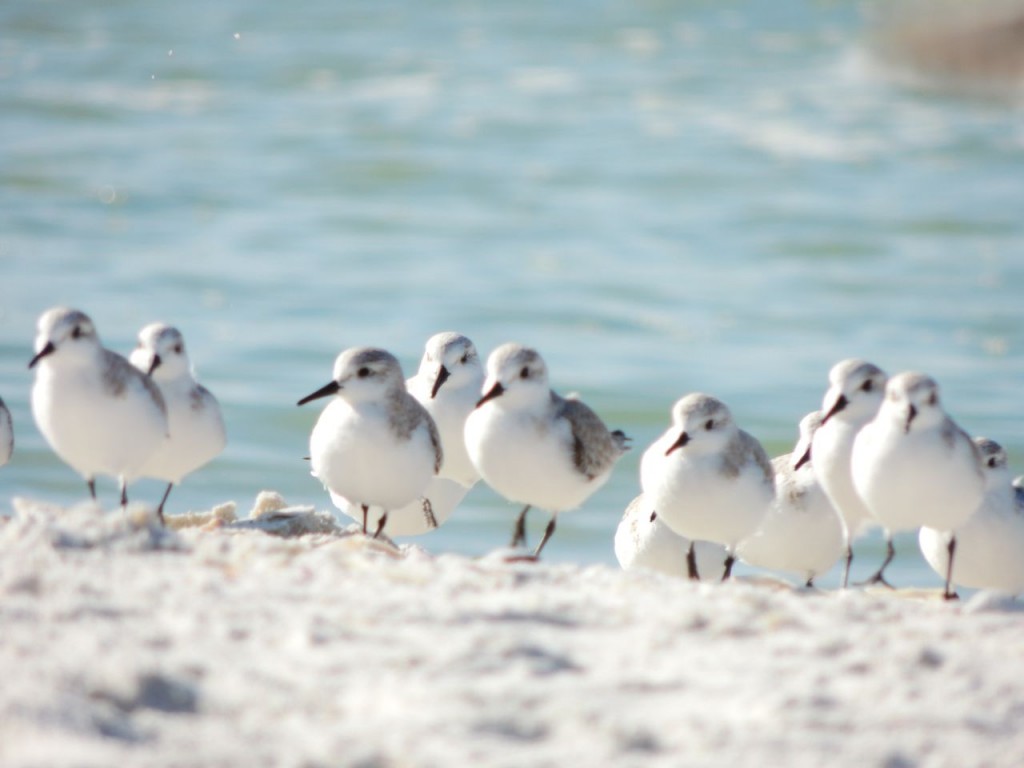
The beach captivated me with Sanderlings like miniature wind-up toys skittering along the advancing and retreating wave-edges, Willets oh-so-stoically letting the water wash around them, and Semi-palmated Plovers wandering up and down, sometimes hopping up onto much drier ground to pick for food wherever it may be found. Ahead of us, the Tri-colored Heron, in the gallery below, stood, sometimes washed by the waves, watchful and waiting for fish and every now and then it would thrust deep into the surf and bring up something small, silver and wriggly.
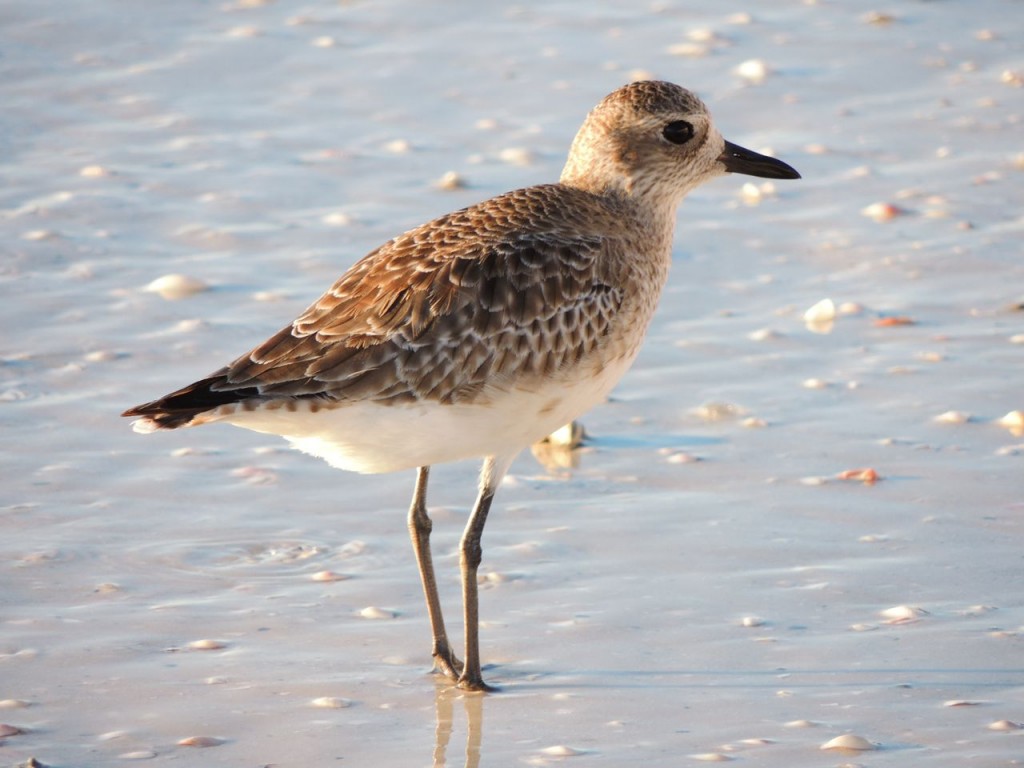
Black-bellied Plovers are anything but black-bellied at this time of year. When we see them in Ontario, usually in August or September, it’s quite clear how they get their name, but that black undersides is a breeding plumage affectation and is moulted away to leave a generally mottled and greyish-brown bird (above). Grey Plover is how the same species is known in the U.K.; both names have their time and place. Whichever name you give them, they, like most plovers, are endearing birds, they have an earnestly vulnerable look about them that makes you want to love and protect them.
Protect them we must, for a least one plover species, the Piping Plover, is in trouble and is considered an Endangered Species in the U.S.A. and Canada. It is a sparrow-sized bird of wide sandy shorelines and chooses to nest on open sand beaches where a bare scrape or hollow is all it needs by way of a nest. The big problem is that such beaches are popular with people too, some of whom bring dogs or ATVs with them or are just plain unwittingly careless; bad for Piping Plovers.
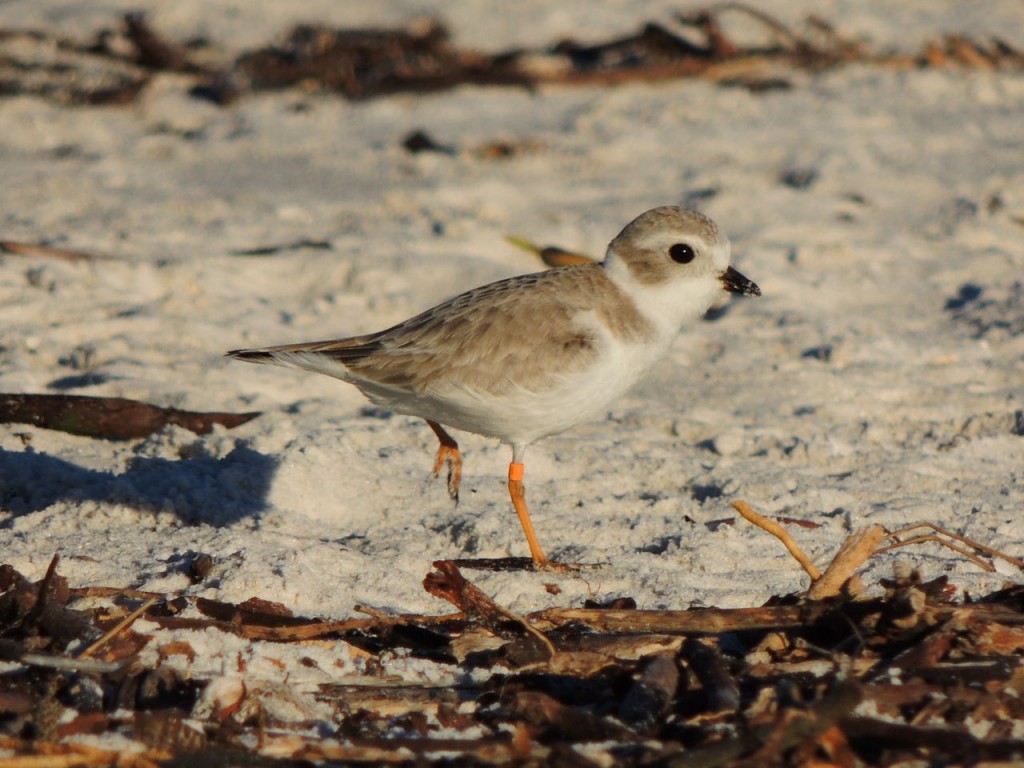
I was ready to call the Tri-colored Heron my Bird of the Day until we turned a corner and found another group of Sanderlings pottering around and with them a single Piping Plover; a wow bird to be sure. We sat quietly and it paid us no heed, gradually moving in closer. I took several pictures and then we noticed that it bore a small green flag on its right leg, a sign that it had been part of a closely studied brood somewhere and, as a chick, most likely captured, weighed, tagged and released. Reviewing my photos later, we realised that the letters on the flag were readable – E3Y, and that it had an orange band above its right knee. With a bit of on-line research I determined that researchers from Virginia Tech had originally tagged this bird, so I excitedly sent them an email. The next day I received a reply which, condensed a little, read: “Thanks for reporting this banded plover! … this bird was banded as a chick by researchers from Virginia Tech on Fire Island NS, NY in June 2014. It has been re-sighted around the Naples area for the past month. What a life!”
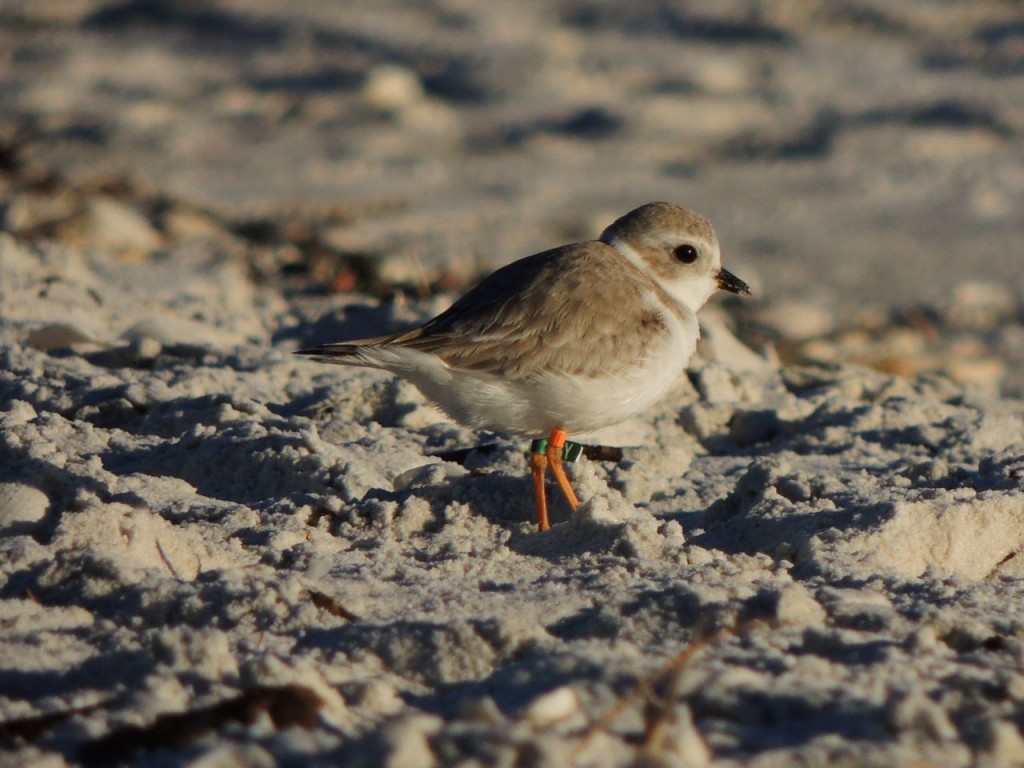
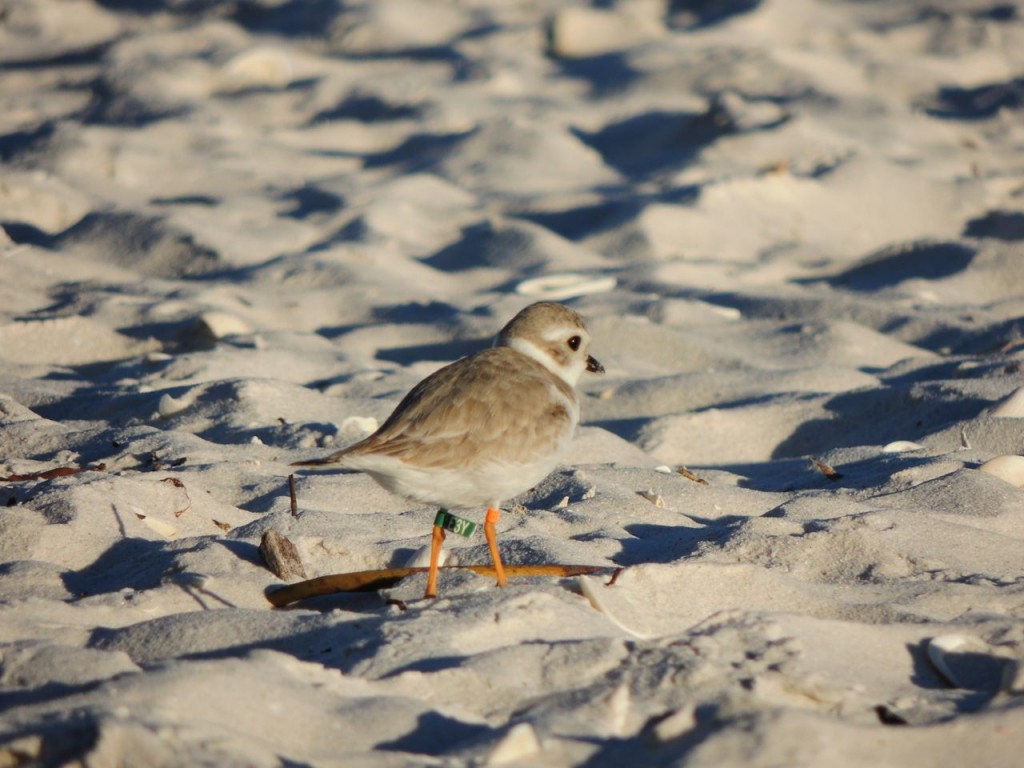
Above and below are a few photos of this magical little bird. Knowing just that little bit more, about one individual in a species hanging on by a thread, was really quite a thrill. That it had hatched just six months ago, grew to maturity on an Atlantic beach and subsequently migrated down the coast and across peninsular Florida was more than enough to make it my Bird of the Day.
You can view many more of my photos of shorebirds, herons and the like in Florida by clicking on this link.
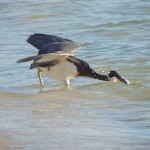
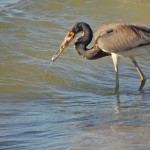
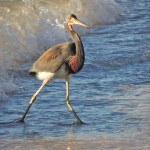
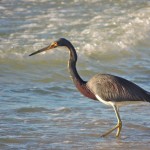
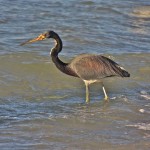
Most interesting, especially the comparison between the American and European names. Indeed, apart from the orange rather than dark legs, your Piping Plover looks very similar, and probably in size too, to our Kentish Plover.
Happy Christmas and New Year. I trust you stay healthy and have a great birding 2015.
Bob Wright
Thanks Bob
There must have been some splitting going on. The Shorebirds of the Northern Hemisphere by Alan Richards ( 1988) says the Snowy Plover (of the Americas) is a pale form of the KEPL; but no longer. KEPL is Charadrius alexandrinus and SNPL is c. nivosus.
I saw many SNPL too, more on them in a few days; writing a blog entry takes time and there’s well, Christmas to deal with in the short term.
And on that topic, I wish you the very best for it and the New Year.